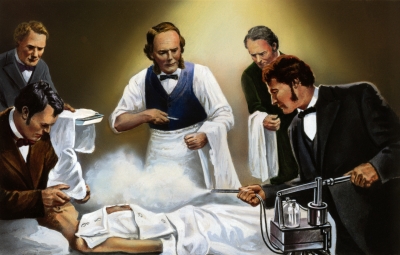
Did you know there was a time when people undergoing surgery died of infection ? How did it come to an end? Who were the people behind the invention of antiseptics? Read on to find out….
In the latter part of the 19th century, almost 90 per cent of the patients undergoing surgery in London hospitals died of septic infections after their operations. The infection was spread by the surgeons hands, through unclean instruments and bandages and by the general filth that prevailed in the hospitals.
Then, in the early 1850s, a surgeon at the Vienna General Hospital, Ignaz Semmelweis, introduced a sterilising routine. He had all students and surgeons scrub their hands vigorously in a calcium chloride solution before touching patients.
The result was dramatic. The death rate in the hospital due to infection fell by 90 per cent in two years. The second medical man to try out antiseptics was the Professor of Surgery at Glasgow University, Joseph Lister. He felt that the only way to kill germs was to treat the environment with antiseptic. He applied carbolic acid to the surface of wounds, to pre-boiled dressings and surgical instruments. He invented a spray which sent a fine mist of carbolic acid into the air above the operating table.
Antiseptics enabled Lister to perform major operations with success, something that had not been possible before. Later antiseptics became widely accepted, saving a huge number of lives.




